The beauty and cosmetics industry is one of the most dynamic and fast-evolving sectors globally, characterized by innovation, creativity, and meticulous attention to quality and safety. Behind every luxurious lipstick, soothing lotion, or high-performance skincare serum lies a rigorous and methodical manufacturing process. Whether creating a small boutique line or producing goods at a global scale, understanding the cosmetics manufacturing process is crucial for brands aiming to deliver exceptional products that meet both regulatory standards and consumer expectations.
At NutriGlow Private Label, we specialize in helping brands bring their cosmetic visions to life. From conceptualization to final product delivery, the manufacturing process we follow is a seamless blend of art and science. In this detailed guide, we will walk you through every stage of the cosmetics manufacturing journey, highlighting the intricate steps, quality control measures, and technological advancements that ensure excellence at every level. Whether you’re a startup entrepreneur or an established brand owner, this comprehensive breakdown will provide invaluable insights into how high-quality cosmetic products are crafted.
Product Conceptualization and Formulation
Every exceptional cosmetic product begins with a strong foundation: a well-thought-out concept and an expertly developed formulation. This stage is often considered the most creative part of the manufacturing process, as it involves transforming an idea into a tangible, market-ready formula.
Identifying Market Needs:
Before developing a new product, it’s critical to research and analyze market trends, customer demands, and competitive gaps. This ensures that the new cosmetic item addresses a real need or introduces a unique innovation. At NutriGlow Private Label, we assist our clients by conducting thorough market analyses to align product development with current consumer preferences.
Formulation Development:
Once the concept is finalized, the next step is formulation. Our skilled chemists and product developers create initial prototypes by blending active ingredients, emulsifiers, preservatives, and fragrances. The choice of ingredients depends on several factors, including desired product benefits (hydration, anti-aging, SPF protection), texture (creamy, gel-like, fluid), and target audience (sensitive skin, vegan consumers, etc.).
Ingredient Sourcing:
Quality begins at the source. We carefully select raw materials from trusted suppliers, prioritizing ingredients that are ethically sourced, cruelty-free, and, when required, certified organic. This not only enhances the product’s performance but also supports our clients’ brand values and marketing claims.
Regulatory Compliance:
Each country has stringent regulations concerning cosmetic formulations. For example, the FDA regulates cosmetics in the U.S., while the EU has its own Cosmetic Regulation (EC) No 1223/2009. NutriGlow Private Label ensures all formulations comply with relevant laws, including ingredient restrictions, labeling requirements, and safety assessments.
Prototype Testing:
After initial formulation, multiple rounds of lab testing are conducted to evaluate the prototype’s stability, texture, appearance, scent, and overall performance. Modifications are made based on these tests until the desired product characteristics are achieved.
Packaging Development:
Parallel to formulation, packaging design begins. Packaging must not only be visually appealing but also protect the product’s integrity. We consider factors like light sensitivity (important for products with Vitamin C or retinoids), ease of use, and environmental impact.
Sample Approval:
Once the prototype meets all performance and aesthetic criteria, samples are shared with the client for approval. This stage may involve minor tweaks based on client feedback before finalizing the formulation for mass production.
Documentation:
Detailed documentation is prepared, including formula compositions, material safety data sheets (MSDS), and regulatory compliance certificates. This step is essential for quality assurance, traceability, and future audits.
Key Takeaways from This Stage:
| Step | Description | Importance |
|---|---|---|
| Market Research | Identify trends and needs | Aligns product with consumer demand |
| Formulation | Create initial blend | Defines product performance |
| Ingredient Sourcing | Ethical, high-quality materials | Boosts product appeal and safety |
| Compliance | Adhere to laws | Prevents legal issues |
| Prototype Testing | Validate quality and stability | Ensures customer satisfaction |
Manufacturing and Production Setup
After finalizing the formulation and obtaining all necessary approvals, the cosmetic product moves into the manufacturing and production phase. This stage transforms small laboratory samples into full-scale commercial batches ready for market distribution. At NutriGlow Private Label, we maintain the highest standards of quality, precision, and consistency throughout the production process to ensure every batch reflects the excellence our clients expect.
Facility and Equipment Preparation:
The manufacturing process begins with preparing the production facility. Our production areas are maintained under strict sanitary conditions, with regular cleaning schedules and environmental controls (such as humidity and temperature regulation) to prevent contamination. All machinery, including mixers, homogenizers, filling lines, and packaging equipment, is sterilized before every production run.
Good Manufacturing Practices (GMP):
Adhering to Good Manufacturing Practices (GMP) is non-negotiable in cosmetic manufacturing. GMP guidelines, as outlined by international bodies like the ISO 22716 standard, dictate the methods, equipment, facilities, and controls required for producing consistently high-quality products. NutriGlow Private Label strictly follows these practices, including detailed batch recording, traceability of raw materials, and stringent quality control checks at every stage.
Batch Production Process:
Each cosmetic batch is produced according to a Master Manufacturing Record (MMR), which specifies ingredient quantities, processing temperatures, mixing speeds, and timing. Here’s a typical workflow for batch production:
-
Weighing and Pre-blending:
Raw materials are accurately weighed based on the batch size. Certain ingredients may require pre-blending to ensure even distribution. -
Heating and Mixing:
Ingredients are often divided into oil and water phases. Each phase is heated separately to specific temperatures, promoting emulsification and stability. -
Emulsification:
Once heated, oil and water phases are combined using high-shear mixers or homogenizers. This step is crucial for achieving the product’s desired texture, viscosity, and stability. -
Cooling and Final Adjustments:
After emulsification, the product is gradually cooled while stirring to prevent separation. Active ingredients, fragrances, and preservatives sensitive to heat are added during this cooling phase. -
Filling and Packaging:
When the batch is complete, the product is transferred into the filling lines, where it is dispensed into jars, tubes, bottles, or pumps. Automated machines ensure precision and minimize contamination risks.
In-Process Quality Control:
Throughout production, quality control tests are performed to monitor critical parameters such as pH levels, viscosity, color, scent, and microbial content. If any test falls outside the acceptable range, corrective actions are taken immediately to ensure the final product remains within specifications.
Scaling Up Production:
Scaling from laboratory samples to commercial-scale production requires careful adjustment of processing parameters. Factors like mixing times, temperature gradients, and shear rates can vary with volume. At NutriGlow Private Label, pilot batches are created before full production to optimize these variables and ensure scalability without compromising quality.
Filling and Labeling:
Once products pass final quality checks, they are filled and sealed using automated or semi-automated equipment. Labels are then applied, either by hand or with automated labelers, depending on the production scale. Label accuracy is crucial for regulatory compliance and brand presentation.
Batch Documentation:
Complete batch records, including raw material lot numbers, production conditions, in-process test results, and operator logs, are compiled for each production run. These documents ensure full traceability and facilitate future audits or product investigations if needed.
Example of a Typical Production Setup:
| Equipment | Purpose | Example |
|---|---|---|
| Homogenizer | Emulsify oil and water | Creams, lotions |
| Jacketed Mixing Tank | Heat and cool mixtures | Emulsions |
| Filling Machine | Dispense product into packaging | Bottles, tubes |
| Labeler | Apply product labels | Bottles, jars |
Safety Protocols:
Manufacturing personnel are trained in safety protocols, including proper handling of chemicals, wearing personal protective equipment (PPE), and emergency procedures. Maintaining employee safety is essential not only for regulatory compliance but also for sustaining a productive manufacturing environment.
Environmental Responsibility:
Increasingly, brands and consumers demand eco-conscious practices. NutriGlow Private Label integrates sustainability into manufacturing by minimizing waste, recycling materials wherever possible, and using energy-efficient machinery.
Quality Control and Testing in Cosmetic Manufacturing Process
In cosmetics manufacturing, quality control (QC) is the pillar that supports product safety, effectiveness, and consumer trust. Without stringent quality assurance measures, even the most innovative formulations could fail to meet market expectations or regulatory standards. At NutriGlow Private Label, we employ a comprehensive quality control system that covers every aspect of production, from raw materials to finished goods.
Importance of Quality Control:
Quality control ensures that every product:
-
Meets defined specifications.
-
Is safe for human use.
-
Complies with national and international regulations.
-
Maintains consistency across different batches.
-
Enhances brand reputation and customer satisfaction.
Stages of Quality Control in Cosmetics Manufacturing:
🔹 Raw Material Testing
Every batch of raw materials undergoes rigorous testing upon arrival before entering the production process. Key checks include:
-
Identity verification to confirm the correct material.
-
Purity analysis to detect contaminants.
-
Microbial testing to ensure raw materials are free from harmful bacteria or fungi.
-
Physical property testing such as melting point, pH, and viscosity.
🔹 In-Process Testing
During manufacturing, we continuously monitor:
-
pH balance: Essential for skin compatibility.
-
Viscosity: Affects product texture and spreadability.
-
Appearance: Checks for uniformity in color and consistency.
-
Temperature control: Especially critical during emulsification.
-
Mixing speed and time: Ensures proper emulsification and homogeneity.
🔹 Microbial Testing
Before filling the final product, microbial testing is conducted to rule out contamination. We use validated methods such as:
-
Total viable count (TVC) tests
-
Yeast and mold count tests
-
Pathogen-specific tests (e.g., for Staphylococcus aureus or Pseudomonas aeruginosa)
🔹 Stability Testing
Stability tests simulate various environmental conditions to predict the product’s shelf life. This includes:
-
Accelerated aging tests: High temperatures, humidity, and light exposure.
-
Freeze-thaw tests: Stress tests simulating shipping conditions.
-
Real-time stability studies: Extended observation under normal storage conditions.
Learn more about stability testing in cosmetics on Wikipedia.
🔹 Compatibility Testing
It’s essential that the product does not react adversely with its container. Compatibility testing ensures that:
-
No leaching of container material into the product.
-
No degradation of the container.
-
No changes in the product’s color, scent, or texture over time.
🔹 Finished Product Testing
Finally, the completed product undergoes:
-
Appearance and odor testing
-
pH and viscosity rechecks
-
Microbial analysis
-
Preservative efficacy testing (PET) — also called challenge testing, ensuring the preservative system can control microbial growth during the product’s lifespan.
🔹 Clinical and Consumer Testing (optional but recommended)
In some cases, dermatological testing or consumer panel studies are conducted to validate claims such as “hypoallergenic,” “non-comedogenic,” or “clinically proven.”
🔹 Regulatory Compliance Audits
We ensure every cosmetic product adheres to:
🔹 Label Verification
Accuracy in labeling is critical. We verify:
-
Correct ingredient listings using INCI (International Nomenclature of Cosmetic Ingredients) names.
-
Proper warning statements.
-
Expiry dates and batch numbers.
Sample Quality Control Process Flowchart:
| Step | Description | Purpose |
|---|---|---|
| Raw Material Testing | Verify identity, purity, and microbial quality | Prevent contamination and ensure consistency |
| In-Process Testing | Check pH, viscosity, mixing parameters | Maintain product quality during manufacturing |
| Stability Testing | Simulate aging and shipping conditions | Predict shelf life |
| Finished Product Testing | Final product evaluation | Verify quality before market release |
Why Quality Control Matters More Than Ever:
-
Consumers today are well-informed and demand transparency.
-
Regulatory bodies are increasingly vigilant.
-
Product recalls can severely damage brand reputation.
-
High-quality products lead to positive reviews and repeat customers.
Packaging, Labeling, and Branding in Cosmetic Manufacturing
In the cosmetics industry, packaging and branding are almost as crucial as the formulation itself. A beautifully designed product housed in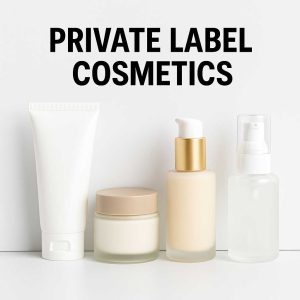
The Importance of Packaging in Cosmetics:
-
Protection: Prevents contamination, oxidation, and degradation.
-
Functionality: Ensures ease of use, correct dosing, and hygiene.
-
Regulatory Compliance: Must include necessary labeling elements.
-
Sustainability: Eco-friendly packaging is increasingly a consumer priority.
-
Brand Communication: Reflects brand values, target demographics, and market positioning.
Selecting the Right Packaging Materials: Choosing the appropriate packaging depends on factors such as product viscosity, sensitivity to light and air, and target customer expectations. Common packaging materials include:
-
Glass: Luxurious, eco-friendly, and non-reactive.
-
PET and HDPE Plastics: Lightweight, shatterproof, recyclable.
-
Aluminum: Excellent for light-sensitive formulations.
-
Biodegradable options: Innovative packaging such as bioplastics made from renewable sources.
Eco-Friendly Packaging Trends: Consumers are increasingly conscious about sustainability. According to a McKinsey Report, eco-friendly packaging influences purchasing decisions for a growing segment of the market.
Eco-innovations include:
-
Compostable containers.
-
Refillable systems.
-
Minimalist designs to reduce material waste.
Labeling Essentials: Product labels must comply with regulatory guidelines to avoid legal issues and to build trust. Key elements include:
-
INCI ingredient list — standardized cosmetic ingredient names.
-
Net contents (weight or volume).
-
Product identity statement (e.g., “moisturizer,” “foundation”).
-
Warning statements if applicable.
-
Manufacturer information and country of origin.
-
Batch number and expiration date.
A quick reference can be found at FDA Cosmetic Labeling Guide.
Branding Strategies for Cosmetics: Your brand voice and visual identity are critical to success in a saturated market. Effective branding includes:
-
Unique Selling Proposition (USP): What makes your brand or product unique? Vegan, organic, dermatologist-tested?
-
Logo and Design: Consistent, appealing, and memorable across all platforms.
-
Storytelling: Building emotional connections through brand narratives.
-
Online Presence: SEO-optimized websites, Instagrammable packaging, influencer collaborations.
Example of Brand Packaging Strategy Table:
| Brand Element | Purpose | Example |
|---|---|---|
| Packaging Design | Attract and retain attention | Minimalist vs. colorful |
| Labeling | Inform and comply | INCI names, expiry date |
| Eco-Friendliness | Appeal to sustainability-focused consumers | Biodegradable tubes |
| Storytelling | Build emotional brand loyalty | “Crafted with Love in India” |
Final Production and Market Launch: Once the product is packaged and labeled, it undergoes a final quality inspection before shipping. Successful product launches also involve:
-
Market testing (beta product launches, focus groups).
-
Strategic distribution partnerships (retailers, e-commerce).
-
Advertising and PR campaigns focused on brand storytelling and highlighting unique features.
Linking the Whole Journey Together: The cosmetic manufacturing process — from ideation to final product launch — is a harmonious blend of science, artistry, regulatory vigilance, and consumer insight. Brands that master these elements are best positioned to thrive in the ever-evolving beauty market.
20 In-Depth FAQs About Cosmetics Manufacturing Process
- What are the main steps in cosmetics manufacturing process?
Concept development, formulation, production, quality control, packaging, and market launch. - What regulations must be followed in cosmetic production?
FDA regulations (USA), EU Cosmetic Regulation 1223/2009, ISO 22716 guidelines, among others. - How important is stability testing?
Critical — it predicts shelf life and ensures product integrity over time. - What is GMP in cosmetics?
Good Manufacturing Practices (GMP) are protocols that ensure consistent product quality and safety. - Can I launch a skincare brand without my own manufacturing facility?
Yes, by partnering with private label manufacturers like NutriGlow Private Label. - What is INCI?
The International Nomenclature of Cosmetic Ingredients — a standardized system for naming cosmetic ingredients. - Why is microbial testing necessary?
To prevent health risks associated with contamination. - What packaging trends are emerging?
Eco-friendly, refillable, and minimalist packaging trends dominate the industry. - How long does cosmetic product development take?
Typically 6–12 months, depending on complexity and regulatory approvals. - What is a preservative challenge test?
Testing the effectiveness of a preservative system by intentionally contaminating the product under controlled conditions. - Can I create vegan and cruelty-free cosmetics?
Absolutely! NutriGlow Private Label offers vegan and cruelty-free formulation options. - What are the risks of poor quality control?
Product recalls, consumer distrust, legal penalties, and reputational damage. - How are cosmetic ingredients sourced?
Through certified suppliers that meet ethical and quality standards. - What is batch traceability?
The ability to track all components and processes for every production batch. - Are there biodegradable options for cosmetic packaging?
Yes, materials like PLA (polylactic acid) plastics are increasingly used. - What does ‘natural cosmetics’ mean?
Products formulated primarily from natural ingredients without synthetic chemicals. - Can I get small batches produced?
Yes, many private label manufacturers offer small-batch production for startups. - Is outsourcing manufacturing cost-effective?
Often, yes — it reduces infrastructure costs and speeds time-to-market. - What is the difference between private label and contract manufacturing?
Private label offers ready-to-brand formulas; contract manufacturing creates custom formulas per client specs. - Why partner with NutriGlow Private Label?
We offer expertise, compliance assurance, scalable production, and support at every stage of your brand’s journey.
The cosmetics manufacturing process is a beautiful synthesis of creativity, technology, and precision. Behind every luxurious cream or vibrant lipstick lies a meticulously structured series of steps, from the selection of high-quality ingredients to the implementation of rigorous quality controls and smart branding strategies. For brands, mastering this process — or partnering with experts like NutriGlow Private Label — is crucial to building trust, fostering loyalty, and achieving long-term success in a competitive market. By staying informed, embracing innovation, and prioritizing quality at every step, brands can transform visionary ideas into market-leading products that delight and inspire consumers worldwide.

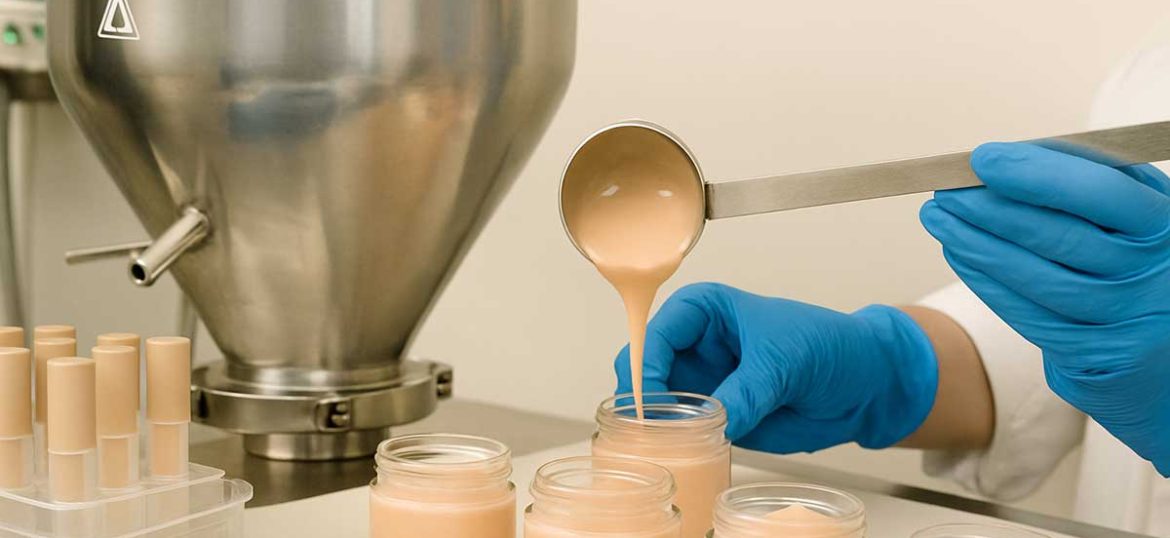
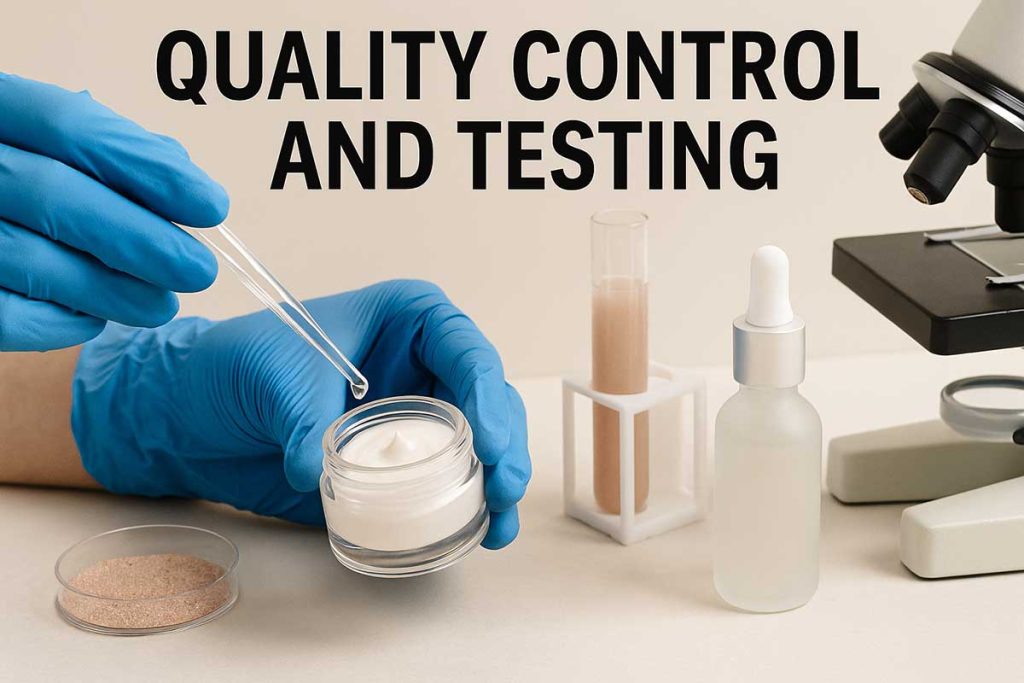
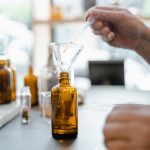
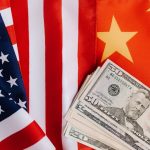
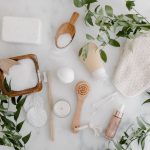

Comment
Looking for serum and serum sheets manufacturers